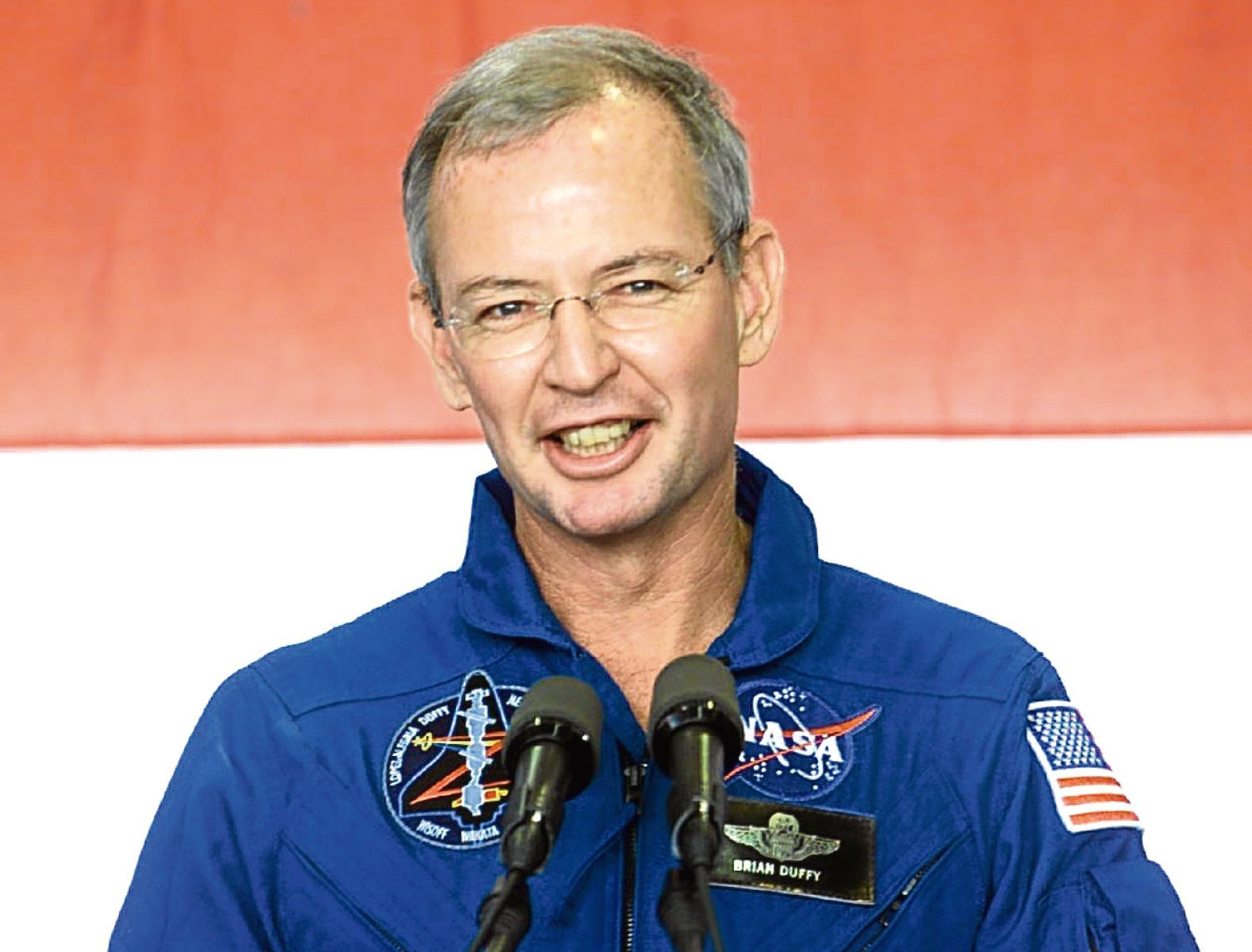
BRIAN DUFFY is a former Nasa astronaut who spent 40 days in space. He flew on four space shuttle missions and is now a Kennedy Space Center ambassador. Brian, 63, told Bill Gibb the Honest Truth about space.
Was flying always in your blood?
I grew up in a small town near Boston where there was a naval air station, so I always watched planes taking off and ended up a colonel in the US Air Force.
However, through childhood I followed the early Nasa astronauts like John Glen and that was really inspirational.
Was the switch from the Air Force to Nasa what you thought?
Pretty much actually. It’s a very small community and we all tend to know one another, so I was well aware of what I was letting myself in for.
Did the Challenger disaster have an impact?
Very much so. I joined in 1985 and Challenger happened in January 1986. My wife and I had just bought a house near the base and our boxes were delivered on the Monday.
Challenger happened on the Tuesday and I remember my wife stopping unpacking and asking what was going to happen now.
I told her right away that NASA would figure it out and we’d be back in space – but it did take until September 1988. As it is a small community, I knew all of the crew of Challenger.
Tell us about your first flight?
It was in 1992 so there had been a number of launches after the programme restarted. When you’re riding uphill, as we call it, it’s very exhilarating, full of vibration and acceleration and you feel you can hardly breathe.
But in just three seconds after the main engines cut out, it suddenly becomes the most peaceful place you’ll ever be.
Trust me, you’d love it!
What surprised you about being in space?
I think it was how brown the earth was – I thought it would be greener! I remember looking down on Africa for the first time expecting that apart from the Sahara it would be full of jungle, but that wasn’t the case. It was, however, unbelievably beautiful, whether you were looking down on the light or dark side.
Did it change your perspective on things?
When you’re up there you don’t see borders or wars or disease, nothing bad at all. You look down and become so aware that we’re all in it together on this one little planet. It does change you and make you see things differently – until you get back and get stuck in your first traffic jam!
You did four missions – were they all the same?
My last two, on which I was the commander, were very different from the first two. I felt the responsibility of leading those missions very keenly.
Did your career inspire others?
Actually, my son Shaun wanted to follow me into the space industry. Unfortunately, his eyesight wasn’t good enough to be an astronaut but he’s now a space engineer, so he did follow me.
Tell us about the Kennedy Space Center in Florida.
I might be biased but I reckon it’s the best day out ever. There is no place like it on earth. When you visit you’ll get as close as it’s possible to be to feeling what it’s like to actually be.
The exhibit which is closest to my heart is the Shuttle Atlantis which I was on for my first time in space. You go through a couple of rooms telling the history and then Atlantis appears in a way you don’t expect. I still love the thrill of seeing it.
Is Kennedy still very much active?
Indeed. There are lots of rocket launches planned as Nasa is now involved in developing commercial flights. And next year it will once again launch astronauts into space.
For more information on the Kennedy Space Center, visit kennedyspacecenter.com

Enjoy the convenience of having The Sunday Post delivered as a digital ePaper straight to your smartphone, tablet or computer.
Subscribe for only £5.49 a month and enjoy all the benefits of the printed paper as a digital replica.
Subscribe